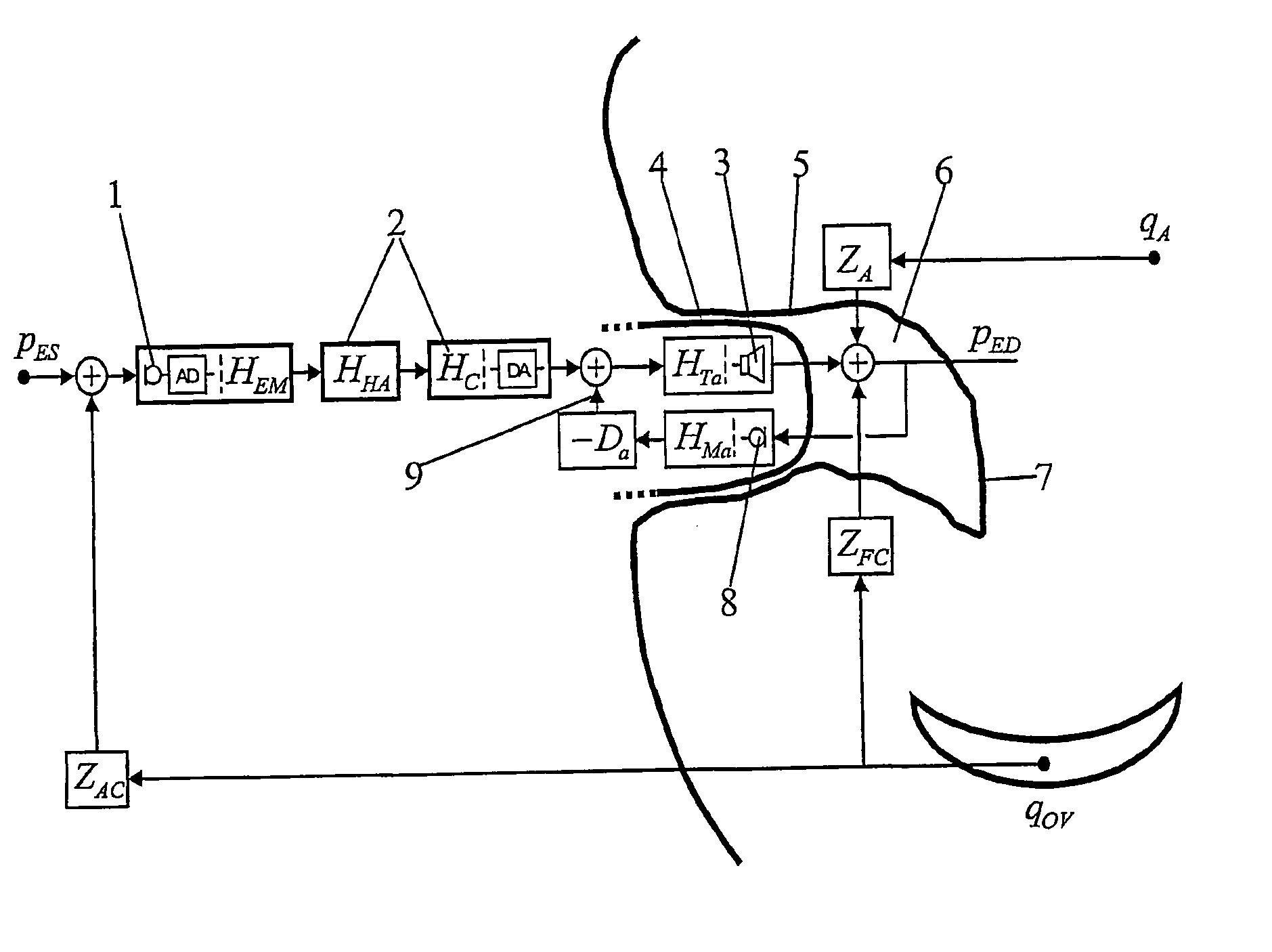Method for counteracting the occlusion effects
- Summary
- Abstract
- Description
- Claims
- Application Information
AI Technical Summary
Benefits of technology
Problems solved by technology
Method used
Image
Examples
Embodiment Construction
[0017] An internal microphone 8 is used in a conventional feed back control system as sketched in FIG. 1. Note that the control loop 9 is assumed to be formed in the analog domain. This is reflected in symbols for the receiver HTα and internal microphone HMα transfer functions, where the subscript α denotes a transfer function between two analog signals. Furthermore, the transfer function of the analog feed back controller is denoted by Dα and finally an additional digital block HC has been added after the hearing aid block HHA, as a means of correcting the changes to the amplification characteristic of the hearing aid introduced by the feed back control system. In this set-up HC also includes the conversion from discrete time signal to analogue signal.
[0018] The relation between the source variables and the pressure at the eardrum PED is pED=pESHEMHHAHCHTa+qOV(ZFC+ZACHEMHHAHCHTa)+qAZA1+DaHTaHMa.(1)
[0019] From this equation it is seen that the amount of attenuation, whi...
PUM
 Login to View More
Login to View More Abstract
Description
Claims
Application Information
 Login to View More
Login to View More - R&D
- Intellectual Property
- Life Sciences
- Materials
- Tech Scout
- Unparalleled Data Quality
- Higher Quality Content
- 60% Fewer Hallucinations
Browse by: Latest US Patents, China's latest patents, Technical Efficacy Thesaurus, Application Domain, Technology Topic, Popular Technical Reports.
© 2025 PatSnap. All rights reserved.Legal|Privacy policy|Modern Slavery Act Transparency Statement|Sitemap|About US| Contact US: help@patsnap.com



